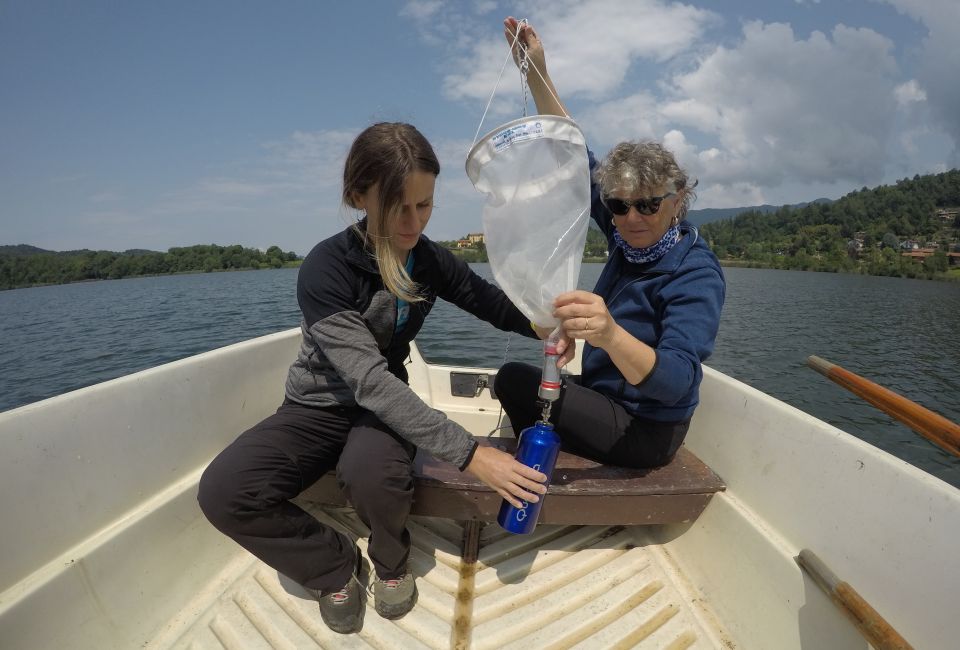
Some lakes are more heavily affected by plastic pollution than the oceans
Fragments of plastic debris, clothing fibres and the remains of packaging are among the plastics and microplastics that have invaded lakes and reservoirs all over the world. The pollution caused by this debris affects even the remotest areas, where human impact is minimal. Furthermore, and for the first time in some cases, it appears that the concentrations of plastic in freshwater environments are higher than those in the well-known "garbage patches" or plastic islands in the oceans.
The underlying factors behind this pollution have been studied in the GALACTIC (GlobAl LAke miCroplasTIC) project, led by Veronica Nava, a researcher at the Department of Environmental and Earth Sciences at the University of Milan-Bicocca, under the supervision of Professor Barbara Leoni, coordinator of the Inland Water Ecology and Management research group, which studies lakes and rivers in the same department at the University. The project has involved 79 researchers and researchers who belong to the international Global Lake Ecological Observatory Network (GLEON), which undertakes scientific research on a global scale on processes and phenomena that occur in freshwater environments. The participants in the study include Mireia Bartrons and Àngels Leiva, researchers in the Aquatic Ecology research group (GEA) at the University of Vic - Central University of Catalonia (UVic-UCC). The results of the research were published in the scientific journal Nature on Thursday 13 July, with the title "Plastic debris in lakes and reservoirs".
The research was carried out using collected samples that were taken to the University of Milan-Bicocca, where they were analysed using technologically advanced instruments provided by the university's interdepartmental spectroscopy network. The most valuable device in the facility is the one used for Raman microspectroscopy (Horiba Jobin Yvon LabRAM HR Evolution Raman Spectrometer), which is located in the laboratory headed by Professor Maria Luce Frezzotti. Using this instrument, it was possible to confirm the polymeric composition of the microplastics with extreme precision, and they were found to contain particularly high levels of polyester, polypropylene and polyethylene.
Plastics also affect the air
The group of 79 scientists also used plankton nets to take samples of surface water in 38 lakes in 23 countries on six continents which are subject to different environmental conditions. Among the lakes where the highest levels of pollution due to plastic debris were identified are some primary sources of drinking water for their local populations, including Lake Maggiore (Italy), Lugano (Switzerland-Italy), Tahoe (USA) and Lough Neagh (United Kingdom), which are also central to their respective leisure economies.
In addition to its negative impact on the use of drinking water, plastic pollution has harmful effects on aquatic organisms and the workings of the ecosystem. "The plastic that accumulates on the surface of aquatic systems can lead to methane and other greenhouse gases being released," explains Verónica Nava. According to the researcher, "plastics can go beyond the hydrosphere, and interact with the atmosphere, biosphere and lithosphere, potentially affecting biogeochemical cycles. Those cycles are the circulation between the earth's different compartments of chemical elements that pass from living matter to inorganic matter by means of chemical transformations and reactions, involving mechanisms that have not yet been understood, and which require a holistic assessment of plastic pollution in lentic systems (still waters)."
Given the relatively high levels of concentration of microplastics in lakes and large reservoirs, these environments could be considered "pollution monitors", since they act as collectors and integrators of various sources of plastics from reservoirs and the atmosphere. "These environments can also retain, modify and transport plastic debris through river basins to the oceans. These results show the global scale of plastic pollution: no lake, not even those furthest away from anthropogenic activity, can be considered truly pure," explains Nava. And she concludes: "This should motivate us to review our strategies for reducing pollution and our waste management processes."
Mireia Bartrons says that "plastic pollution has become an unprecedented crisis." According to the UVic-UCC researcher, "estimates suggest that millions of tonnes of plastics are produced every year, and much of it ends up in our lakes, reservoirs, seas and oceans. Plastics are persistent, and take centuries or even millennia to fully decompose." This accumulation of plastic waste is having a devastating impact on our aquatic ecosystems and the organisms in them, "with dire consequences for the health of the species that depend on them, including human beings."